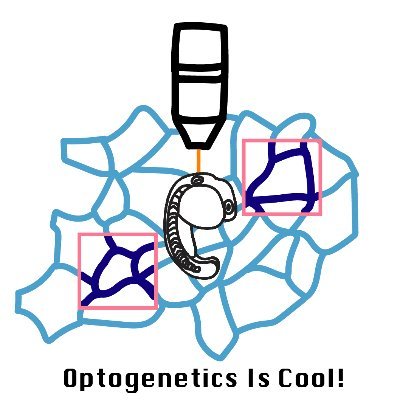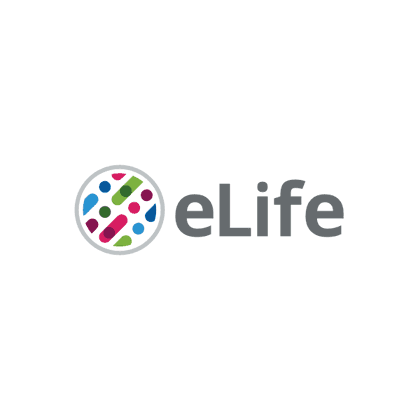
Buckley Lab
@LabBuckley
Followers
637
Following
155
Media
21
Statuses
127
now @buckleylab.bsky.social. We use live confocal imaging and optogenetics to investigate mechanics and cell polarity during epithelial organ morphogenesis
Joined March 2020
Happy to share our new paper about working part-time in academia. We hope it can help to get the conversation going about this important aspect of EDI and research culture. https://t.co/QU1dj32CHC
@eLife @englishse @emiliapsantos @wildhappywell @foxtexel Follows you
elifesciences.org
Part-time working can be beneficial for individual academics, and also for academia as a whole.
0
2
5
in vivo optogenetic control of actomyosin contractility deep within the zebrafish brain
Now that we have polished it a bit, we are excited to share our new preprint with you "Local optogenetic NMYII activation within the zebrafish neural rod results in long range, asymmetric force propagation"
0
2
28
Together, the ability to precisely and reversibly manipulate actomyosin contractility at depth within a physiological in vivo vertebrate system has uncovered rapid, long-range and directional mechanical communication between cells
0
0
0
This helps to explain how precise morphogenetic patterns can occur across distance in response to relatively small local anisotropies in cellular contractility.
1
0
0
Local gradients in actomyosin contractility within the ROI initiate a highly asymmetric response, towards either the anterior or the posterior of the embryo.
1
0
0
When a local contractile force is introduced on the mediolateral axis, this tangentially propagates shear strain along the AP axis.
1
0
0
Together, this data suggests that there is an underlying wave-like propagation of force between rhombomeres along the anterior-posterior axis, with alternating areas of expansion and contraction.
1
0
0
Local contractile force on the mediolateral axis tangentially propagated anisotropic shear strain along the AP axis. This force propagation was long ranging, suggesting the active mechanical propagation of cell generated force.
1
0
0
Local contractility temporally synchronised this oscillation, created a static standing wave along the AP axis, with wavelength correlating with rhombomeric length.
1
0
0
This revealed the presence of locally propagating spatial oscillations of expansion and contraction along the anterior-posterior axis before activation.
1
1
2
We extracted strain rate tensors from the PIV data to investigate the tissue shape-change during this asymmetric displacement of the tissue, investigating isotropic tissue expansion and contraction, and anisotropic shear strain rates.
1
0
0
The degree of epithelialisation did not have a significant impact on the extent of force propagation via lateral cortices, suggesting that the level of lateral cadherin-based adhesions and cellular packing remains similar over the course of mesenchymal to epithelial transition.
1
0
0
Absolute nuclei displacement was small ~0.5um, but this was propagated far along the AP axis
1
0
0
Surprisingly, tissue displacement occurred asymmetrically, in either the anterior or in the posterior direction, likely due to local gradients in RhoA activation.
1
0
0
We measured the effects of this local increase in tissue contractility on the wider surrounding tissue, using particle image velocimetry (PIV) analysis to extract velocity vectors. This uncovered a tangential and elastic tissue displacement along the anterior-posterior axis.
1
0
1
We used this approach to locally activate actomyosin contractility along the medio-lateral axis of cells within the pseudostratified zebrafish neural rod, therefore testing the role of the lateral edges of cells in force propagation within the developing neural tube.
1
0
0
2D light patterning in a 33x33um square created approximately hourglass shaped 3D regions of activation within the tissue, encompassing ~140 cells. This local actomyosin contractility resulted in shortening of cells along their long, mediolateral axis
1
0
0
Using a digital mirror device and spinning disc microscope, inverse light patterning of activating (640nm) and deactivating (730nm) light caused precise recruitment of a RhoA GEF (LARG), deep within the neural rod, at specific tissue regions encompassing the lateral cell edges
1
0
0
We set out to test how cellular forces propagate at the tissue scale during morphogenesis, using the zebrafish neural rod as a model. First, we developed an in vivo optogenetic approach to reversibly manipulate actomyosin contractility, using the Phytochrome system.
1
0
0
This is the work of our talented PhD student, Helena Crellin, together with great collaborations with Todd Chengxi from CAIC and Guillermo Serrano-Nájera from the @BenSteventon2 lab
1
0
0

